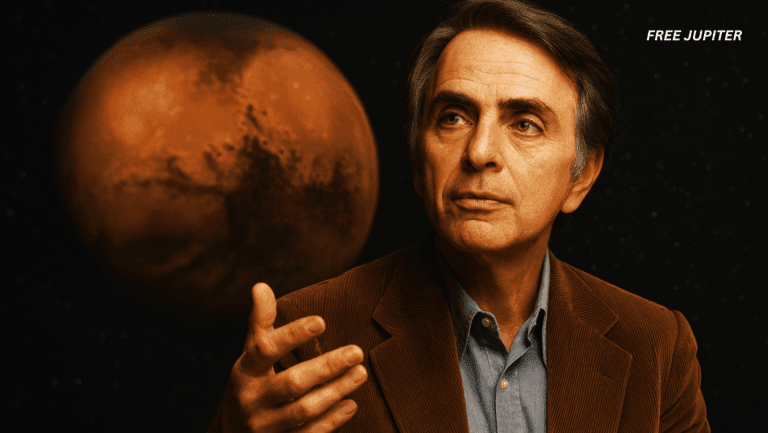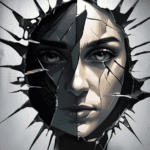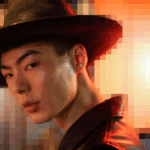Friendly Note: FreeJupiter.com shares general info for curious minds 🌟 Please fact-check all claims—and always check health matters with a professional 💙
Imagine a cosmos where every decision, every quantum fluctuation, spawns an entirely new world. This is not the stuff of science fiction, but a serious hypothesis entertained by some of the sharpest minds in physics. At the heart of this idea is a feline paradox—Schrödinger’s cat—whose ghostly presence in a box forces us to reconsider the very fabric of reality.
The universe, as we know it, is a marvel of complexity and mystery. Among the most intriguing theories in modern science is the so-called many-worlds interpretation, which dares to suggest that our universe is just one of an uncountable multitude. Each universe branches off at every quantum event, forming a vast, unseen multiverse. While this concept may sound like something out of a comic book, it is grounded in the mathematics of quantum mechanics, and it has profound implications for how we understand existence.
Quantum Mechanics and the Many-Worlds Interpretation
Quantum mechanics, the study of the smallest particles and forces, is famously strange. Particles can be in two places at once, or exist in a state of superposition—meaning they embody multiple possibilities until measured. The many-worlds interpretation takes this strangeness to the next level by proposing that every possible outcome of a quantum event actually occurs, but in separate, parallel universes.
Unlike other theories about the multiverse—such as those involving inflationary bubbles or string theory—the many-worlds interpretation does not require separate universes to be far apart in space or time. Instead, these alternate realities exist right alongside our own, invisible and undetectable, yet just as real.
This interpretation is built on the principle of unitary evolution, which holds that quantum systems evolve smoothly and predictably, without any mysterious collapses or external interventions. However, this leads to a startling conclusion: the universe is constantly splitting into new branches, each representing a different possible outcome.
The Challenge of Classical Reality
Despite the elegance of the many-worlds interpretation, it raises a perplexing question: if the universe is constantly branching, why do we perceive a single, coherent reality? Why don’t we notice these parallel worlds in our everyday lives?
This is where Schrödinger’s cat comes in. In the famous thought experiment, a cat is placed in a box with a device that may or may not release poison, depending on the outcome of a quantum event. According to quantum mechanics, until the box is opened and the cat observed, it exists in a superposition of being both alive and dead. The many-worlds interpretation suggests that both outcomes actually happen, but in different branches of the multiverse.
Yet, this explanation does not fully resolve the puzzle. If the universe is constantly splitting, why do we always find ourselves in a world where the cat is either definitively alive or dead, never both at once?
New Insights from Barcelona
Recent research by a team of theoretical physicists at the Autonomous University of Barcelona has shed new light on this old problem. Their work focuses on the way particles interact within isolated quantum systems. Through sophisticated numerical simulations, they have shown that as the number of particles and their interactions increase, the quantum effects that allow for superposition are dramatically suppressed.
In other words, the more complex the system—such as a cat in a box, or indeed, the entire universe—the less likely it is that quantum weirdness will be apparent. The researchers explain that the sheer number of particles involved in everyday objects means that quantum possibilities are almost instantly reduced to a single, classical outcome.
This phenomenon does not rely on external noise or environmental decoherence, which are often cited in traditional explanations. Instead, the Barcelona team highlights the importance of “slow and coarse observables”—quantities that change slowly over time and act as stabilizing forces within the system. These observables help anchor the system to a classical trajectory, making the emergence of a single, observable reality all but inevitable.
Decoherence and the Path to Classicality
Decoherence is a well-known concept in quantum mechanics. It describes how quantum superpositions lose their coherence and collapse into definite states due to interactions with the environment. However, the Barcelona researchers argue that decoherence alone is not sufficient to explain the emergence of classicality within the many-worlds interpretation.
To explore this further, the team used a mathematical tool called the decoherence functional, which evaluates the consistency of quantum histories. Their simulations revealed that classical states arise naturally in systems that are nonintegrable—meaning their behavior is governed by random matrix theory rather than simple, predictable patterns.
Read more: Banned Sacred Text Claims Jesus Didn’t Die The Way We’ve Always Believed
This approach builds on the work of physicist Nico van Kampen, who emphasized the importance of slow, coarse observables in the transition from quantum to classical behavior. While van Kampen’s ideas were initially overlooked, recent advances have provided strong evidence supporting his insights.
The researchers’ simulations examined systems with varying numbers of particles and dimensions, and consistently found that quantum effects diminish exponentially as the system grows larger. This suggests that classicality is not a rare or special condition, but a universal feature of large quantum systems.
Furthermore, their results indicate that almost any initial wave function can give rise to meaningful classical universes. This challenges the notion that specific, finely tuned conditions are required for classical reality to emerge.
Implications and Open Questions
While the Barcelona team’s findings offer valuable insights, they also highlight some of the limitations of the many-worlds interpretation. The theory assumes that all universes behave similarly, but it does not account for the complexities of general relativity or the potential influence of quantum randomness on macroscopic scales.
For example, it is still conceivable that certain entangled states could produce mixed outcomes, such as a superposition of alive and dead cats, even in large systems. Additionally, the concept of the “arrow of time”—the directionality that distinguishes past from future—is not inherently tied to wave function branching. The many-worlds interpretation describes a multiverse where time symmetry could allow for retrocausal effects, further complicating our understanding of classicality.
Despite these challenges, the many-worlds interpretation remains a compelling framework for exploring the nature of reality. By emphasizing the role of entanglement and nonintegrability, the Barcelona researchers have advanced our understanding of how classical states emerge from quantum mechanics. Their work underscores the richness of quantum theory and its potential to reshape our perception of the universe.
Schrödinger’s Cat: A Metaphor for Quantum Mystery
Schrödinger’s cat continues to captivate physicists and philosophers alike. The cat’s paradoxical state—both alive and dead until observed—serves as a powerful metaphor for the unresolved tensions within quantum mechanics. It offers a glimpse into a multiverse teeming with possibility, where every quantum event opens the door to a new reality.
While we may never be able to perceive the quantum multiverse directly, ongoing research brings us closer to unraveling its secrets. Each new discovery peels back another layer of mystery, revealing a cosmos that is far stranger and more wonderful than we ever imagined.
The Future of Multiverse Research
As scientists continue to explore the implications of the many-worlds interpretation, they are confronted with both exciting possibilities and daunting challenges. The idea that our universe is just one of countless others is both humbling and exhilarating. It forces us to reconsider our place in the cosmos and the nature of reality itself.
Future research will likely focus on refining our understanding of how classicality emerges from quantum mechanics, and on exploring the connections between the many-worlds interpretation and other theories of the multiverse. Advances in technology and computational power will enable more sophisticated simulations, shedding new light on these profound questions.
In the meantime, Schrödinger’s cat remains a symbol of the mysteries that lie at the heart of quantum physics. Its enigmatic presence reminds us that the universe is full of surprises, and that our journey to understand it is far from over.
Conclusion: Embracing the Quantum Tapestry
The universe is a vast, intricate tapestry, woven from the threads of quantum possibility. The many-worlds interpretation, with its vision of a branching multiverse, offers a bold and beautiful way to make sense of the strange world revealed by quantum mechanics. While many questions remain unanswered, the work of researchers like those in Barcelona brings us ever closer to understanding how the quantum and classical worlds are connected.
Schrödinger’s cat, perched on the boundary between life and death, serves as a reminder of the mysteries that still await us. As we continue to explore the frontiers of physics, we may yet discover that reality is even more astonishing than we ever dreamed.










